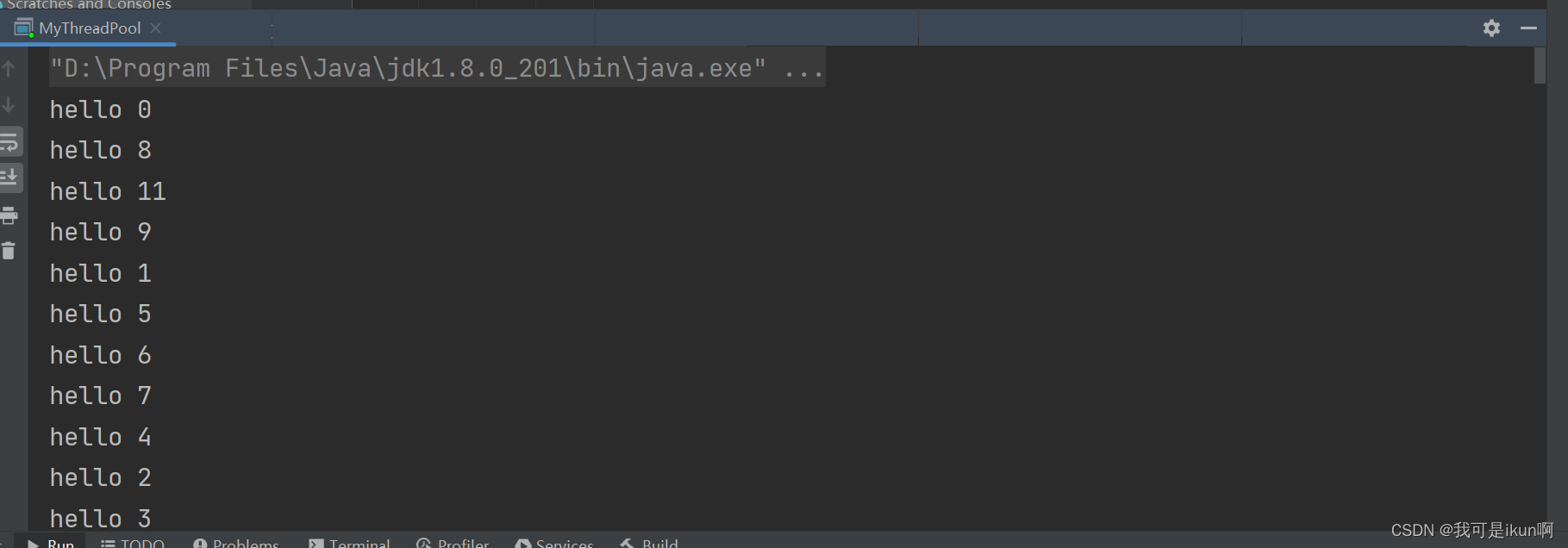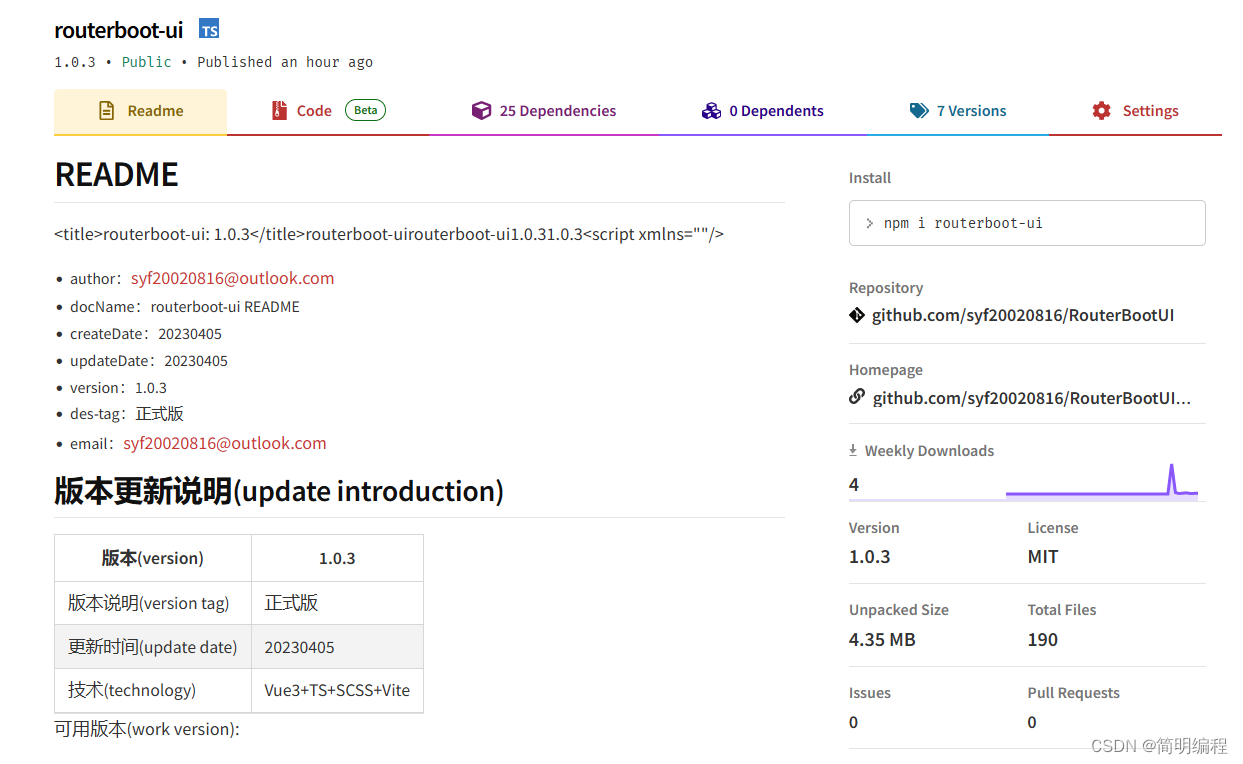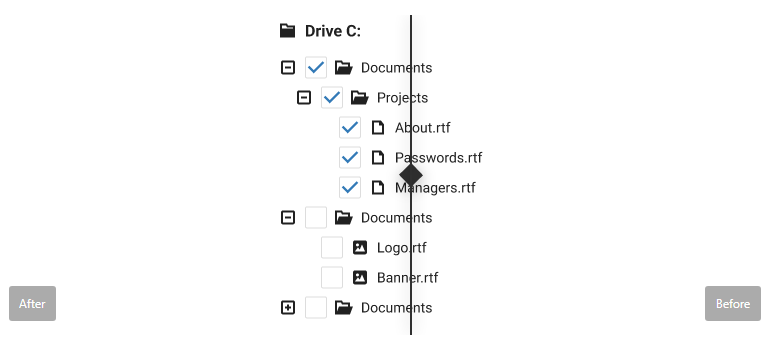目录
第六章 远程访问@HttpExchange[SpringBoot 3]
6.1.1.1 准备工作:
6.1.1.2 声明式HTTP远程服务
6.1.1.3 Http服务接口的方法定义
6.1.1.4 组合使用注解
6.1.1.5 Java Record
6.1.1.6 定制HTTP请求服务
第六章 远程访问@HttpExchange[SpringBoot 3]
远程访问是开发的常用技术,一个应用能够访问其他应用的功能。Spring Boot提供了多种远程访问的技术。 基于HTTP协议的远程访问是支付最广泛的。Spring Boot3提供了新的HTTP的访问能力,通过接口简化HTTP远程访问,类似Feign功能。Spring包装了底层HTTP客户的访问细节。
SpringBoot中定义接口提供HTTP服务。生成的代理对象实现此接口,代理对象实现HTTP的远程访问。需要理解:
- @HttpExchange
- WebClient
WebClient特性:
我们想要调用其他系统提供的 HTTP 服务,通常可以使用 Spring 提供的 RestTemplate 来访问,RestTemplate 是 Spring 3 中引入的同步阻塞式 HTTP 客户端,因此存在一定性能瓶颈。Spring 官方在 Spring 5 中引入了 WebClient 作为非阻塞式HTTP 客户端。
- 非阻塞,异步请求
- 它的响应式编程的基于Reactor
- 高并发,硬件资源少。
- 支持Java 8 lambdas 函数式编程
什么是异步非阻塞
理解:异步和同步,非阻塞和阻塞
上面都是针对对象不一样
异步和同步针对调度者,调用者发送请求,如果等待对方回应之后才去做其他事情,就是同步,如果发送请求之后不等着对方回应就去做其他事情就是异步
阻塞和非阻塞针对被调度者,被调度者收到请求后,做完请求任务之后才给出反馈就是阻塞,收到请求之后马上给出反馈然后去做事情,就是非阻塞
6.1.1.1 准备工作:
1.安装GsonFormat插件,方便json和Bean的转换
2.介绍一个免费的、24h在线的Rest Http服务,每月提供近20亿的请求,关键还是免费的、可公开访问的。
6.1.1.2 声明式HTTP远程服务
需求: 访问 https://jsonplaceholder.typicode.com/ 提供的todos服务。 基于RESTful风格,添加新的todo,修改todo,修改todo中的title,查询某个todo。声明接口提供对象https://jsonplaceholder.typicode.com/todos 服务的访问
创建新的Spring Boot项目Lession18-HttpService, Maven构建工具,JDK19。 Spring Web, Spring Reactive Web , Lombok依赖。
step1:Maven依赖pom.xml
<dependencies><dependency><groupId>org.springframework.boot</groupId><artifactId>spring-boot-starter-web</artifactId></dependency><dependency><groupId>org.springframework.boot</groupId><artifactId>spring-boot-starter-webflux</artifactId></dependency><dependency><groupId>org.springframework.boot</groupId><artifactId>spring-boot-starter-test</artifactId><scope>test</scope></dependency><dependency><groupId>io.projectreactor</groupId><artifactId>reactor-test</artifactId><scope>test</scope></dependency>
</dependencies>
step2:声明Todo数据类
/*** 根据https://jsonplaceholder.typicode.com/todos/1 的结构创建的*/
public class Todo {private int userId;private int id;private String title;private boolean completed;//省略 set , get方法public boolean getCompleted() {return completed;}public void setCompleted(boolean completed) {this.completed = completed;}@Overridepublic String toString() {return "Todo{" +"userId=" + userId +", id=" + id +", title='" + title + '\'' +", completed=" + completed +'}';}
}step3:声明服务接口
import org.springframework.http.HttpHeaders;
import org.springframework.http.MediaType;
import org.springframework.http.ResponseEntity;
//...public interface TodoService {@GetExchange("/todos/{id}")Todo getTodoById(@PathVariable Integer id);@PostExchange(value = "/todos",accept = MediaType.APPLICATION_JSON_VALUE)Todo createTodo(@RequestBody Todo newTodo);@PutExchange("/todos/{id}")ResponseEntity<Todo> modifyTodo(@PathVariable Integer id,@RequestBody Todo todo);@PatchExchange("/todos/{id}")HttpHeaders pathRequest(@PathVariable Integer id, @RequestParam String title);@DeleteExchange("/todos/{id}")void removeTodo(@PathVariable Integer id);}step4:创建HTTP服务代理对象
@Configuration(proxyBeanMethods = false)
public class HttpConfiguration {@Beanpublic TodoService requestService(){WebClient webClient = WebClient.builder().baseUrl("https://jsonplaceholder.typicode.com/").build();HttpServiceProxyFactory proxyFactory = HttpServiceProxyFactory.builder(WebClientAdapter.forClient(webClient)).build();return proxyFactory.createClient(TodoService.class);}
}
step5:单元测试
@SpringBootTest
class HttpApplicationTests {@Resourceprivate TodoService requestService;@Testvoid testQuery() {Todo todo = requestService.getTodoById(1);System.out.println("todo = " + todo);}@Testvoid testCreateTodo() {Todo todo = new Todo();todo.setId(1001);todo.setCompleted(true);todo.setTitle("录制视频");todo.setUserId(5001);Todo save = requestService.createTodo(todo);System.out.println(save);}@Testvoid testModifyTitle() {//org.springframework.http.HttpHeadersHttpHeaders entries = requestService.pathRequest(5, "homework");entries.forEach( (name,vals)->{System.out.println(name);vals.forEach(System.out::println);System.out.println("=========================");});}@Testvoid testModifyTodo() {Todo todo = new Todo();todo.setCompleted(true);todo.setTitle("录制视频!!!");todo.setUserId(5002);ResponseEntity<Todo> result = requestService.modifyTodo(2,todo);HttpStatusCode statusCode = result.getStatusCode();HttpHeaders headers = result.getHeaders();Todo modifyTodo = result.getBody();System.out.println("statusCode = " + statusCode);System.out.println("headers = " + headers);System.out.println("modifyTodo = " + modifyTodo);}@Testvoid testRemove() {requestService.removeTodo(2);}
}
6.1.1.3 Http服务接口的方法定义
@HttpExchange注解用于声明接口作为HTTP远程服务。在方法、类级别使用。通过注解属性以及方法的参数设置HTTP请求的细节。
快捷注解简化不同的请求方式
- GetExchange
- PostExchange
- PutExchange
- PatchExchange
- DeleteExchange
@GetExchange就是@HttpExchange表示的GET请求方式
@HttpExchange(method = "GET")
public @interface GetExchange {@AliasFor(annotation = HttpExchange.class)String value() default "";@AliasFor(annotation = HttpExchange.class)String url() default "";@AliasFor(annotation = HttpExchange.class)String[] accept() default {};}
作为HTTP服务接口中的方法允许使用的参数列表
| 参数 | 说明 |
|---|---|
| URI | 设置请求的url,覆盖注解的url属性 |
| HttpMethod | 请求方式,覆盖注解的method属性 |
| @RequestHeader | 添加到请求中header。 参数类型可以为Map<String,?>, MultiValueMap<String,?>,单个值 或者 Collection<?> |
| @PathVariable | url中的占位符,参数可为单个值或Map<String,?> |
| @RequestBody | 请求体,参数是对象 |
| @RequestParam | 请求参数,单个值或Map<String,?>, MultiValueMap<String,?>,Collection<?> |
| @RequestPart | 发送文件时使用 |
| @CookieValue | 向请求中添加cookie |
接口中方法返回值
| 返回值类型 | 说明 |
|---|---|
| void | 执行请求,无需解析应答 |
| HttpHeaders | 存储response应答的header信息 |
| 对象 | 解析应答结果,转为声明的类型对象 |
| ResponseEntity<Void>,ResponseEntity<T> | 解析应答内容,得到ResponseEntity,从ResponseEntity可以获取http应答码,header,body内容。 |
反应式的相关的返回值包含Mono<Void>,Mono<HttpHeaders>,Mono<T>,Flux<T> Mono<Respo nseEntity<Void>>,Mono<ResponseEntity<T>>,Mono<ResponseEntity<Flux<T>>。
6.1.1.4 组合使用注解
@HttpExchange , @GetExchange等可以组合使用。
这次使用Albums远程服务接口,查询Albums信息
step1:创建Albums数据类
public class Albums {private int userId;private int id;private String title;//省略 set ,get@Overridepublic String toString() {return "Albums{" +"userId=" + userId +", id=" + id +", title='" + title + '\'' +'}';}
}
step2:创建AlbumsService接口
接口声明方法,提供HTTP远程服务。在类级别应用@HttpExchange接口,在方法级别使用@HttpExchange , @GetExchange等
@HttpExchange(url = "https://jsonplaceholder.typicode.com/")
public interface AlbumsService {@GetExchange("/albums/{aid}")Albums getById(@PathVariable Integer aid);@HttpExchange(url = "/albums/{aid}",method = "GET",
contentType = MediaType.APPLICATION_JSON_VALUE)Albums getByIdV2(@PathVariable Integer aid);}
类级别的url和方法级别的url组合在一起为最后的请求url地址。
step3:声明代理
@Configuration(proxyBeanMethods = true)
public class HttpServiceConfiguration {@Beanpublic AlbumsService albumsService(){WebClient webClient = WebClient.create();
HttpServiceProxyFactory proxyFactory =
HttpServiceProxyFactory.builder(WebClientAdapter.forClient(webClient))
.build();return proxyFactory.createClient(AlbumsService.class);}
}
step4:单元测试
@SpringBootTest
public class TestHttpExchange {@ResourceAlbumsService albumsService;@Testvoid getQuery() {Albums albums = albumsService.getById(1);System.out.println("albums = " + albums);}@Testvoid getQueryV2() {Albums albums = albumsService.getByIdV2(2);System.out.println("albums = " + albums);}
}
6.1.1.5 Java Record
测试Java Record作为返回类型,由框架的HTTP代理转换应该内容为Record对象
step1:创建Albums的Java Record
public record AlbumsRecord(int userId,int id,String title) {}
step2:AlbumsService接口增加新的远程访问方法,方法返回类型为Record
@GetExchange("/albums/{aid}")
AlbumsRecord getByIdRecord(@PathVariable Integer aid);
step3:单元测试,Record接收结果
@Test
void getQueryV3() {AlbumsRecord albums = albumsService.getByIdRecord(1);System.out.println("albums = " + albums);
}
JavaRecord能够正确接收应该结果,转为AlbumsRecord对象。
6.1.1.6 定制HTTP请求服务
设置HTTP远程的超时时间, 异常处理
在创建接口代理对象前,先设置WebClient的有关配置。
step1:设置超时,异常处理
@Beanpublic AlbumsService albumsService(){HttpClient httpClient = HttpClient.create().option(ChannelOption.CONNECT_TIMEOUT_MILLIS, 30000) //连接超时.doOnConnected(conn -> {conn.addHandlerLast(new ReadTimeoutHandler(10)); //读超时conn.addHandlerLast(new WriteTimeoutHandler(10)); //写超时});WebClient webClient = WebClient.builder().clientConnector(new ReactorClientHttpConnector(httpClient))//定制4XX,5XX的回调函数.defaultStatusHandler(HttpStatusCode::isError,clientResponse -> {System.out.println("******WebClient请求异常********");return
Mono.error(new RuntimeException(
"请求异常"+ clientResponse.statusCode().value()));}).build();HttpServiceProxyFactory proxyFactory= HttpServiceProxyFactory.builder(
WebClientAdapter.forClient(webClient)).build();return proxyFactory.createClient(AlbumsService.class);}
step2:单元测试超时和400异常
@Testvoid testError() {Albums albums = albumsService.getById(111);System.out.println("albums = " + albums);}
测试方法执行会触发异常代码。






